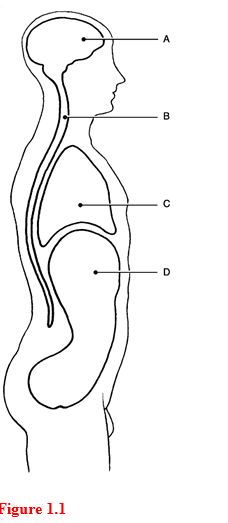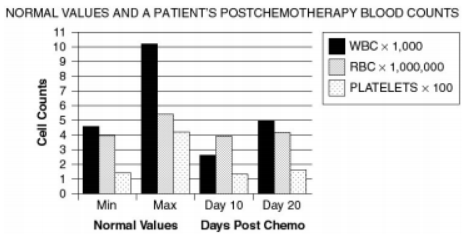Using Figure 1.1, match the following cavities:

1) Thoracic cavity.
2) Cranial cavity.
3) Abdominal cavity.
4) Vertebral cavity.
1) C
2) A
3) D
4) B
You might also like to view...
Which of the following is not a gland in the endocrine system?
A) Salivary B) Hypothalamus C) Pituitary D) Thyroid
Below are results of a blood analysis for a patient undergoing chemotherapy. The left two sets of bars, labeled "Min" and "Max," represent the target values for each cell type. The other sets of bars depict the results of blood counts done on the corresponding days after chemotherapy was administered. Please answer the following questions.
answer the following questions.
A. According to the graph, which type of formed elements reached normal values first?
B. Which kind came closest to its maximum value?
C. On Day 10, which of the following sets of symptoms/characteristics would the patient most likely
exhibit?
1. pale and easily fatigued
2. likely to bruise easily or bleed excessively
3. be at high risk for infections
Explain your choice.

Catecholamines:
a. are derived from cholesterol b. are secreted by the adrenal medulla c. include epinephrine as the major hormone d. include estrogen and testosterone e. are lipophilic
A systematic process of identifying and specifying training requirements is which of the following?
A. Organizational analysis B. Development needs analysis C. Formal learning D. Training needs assessment